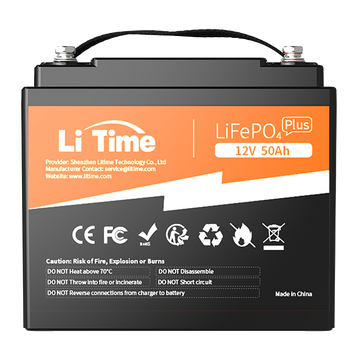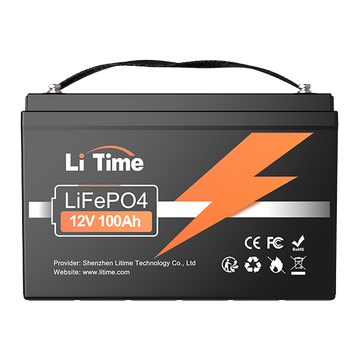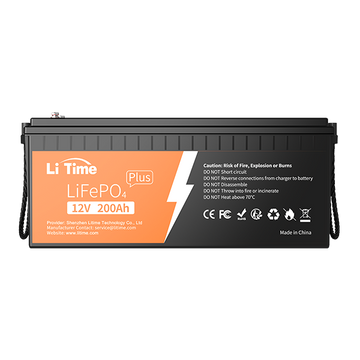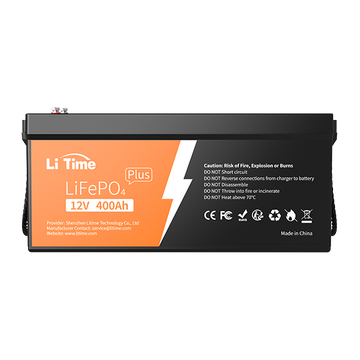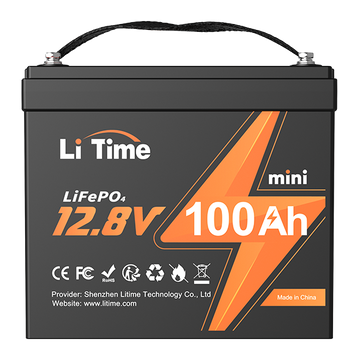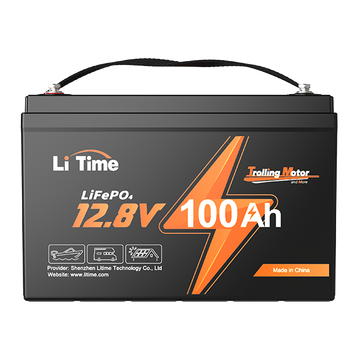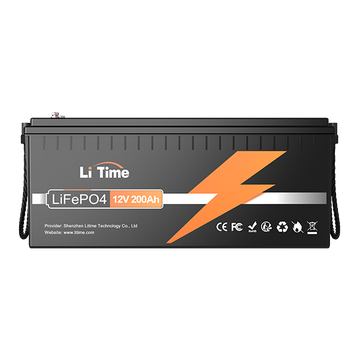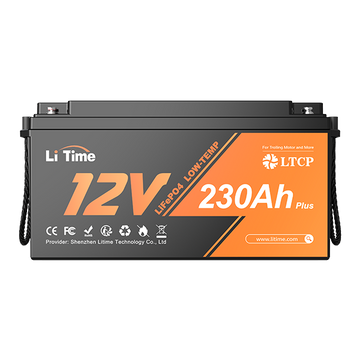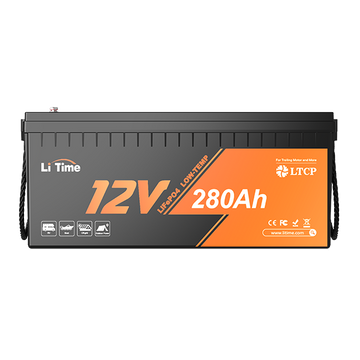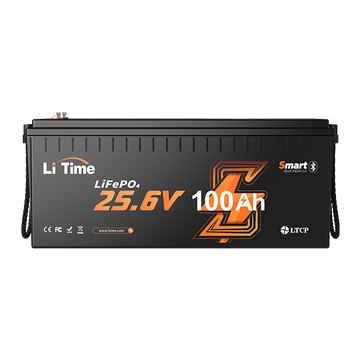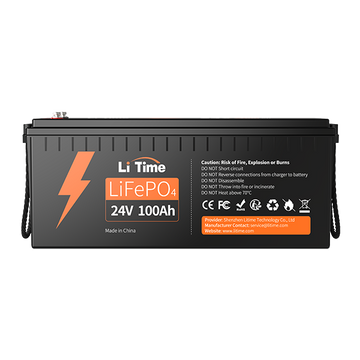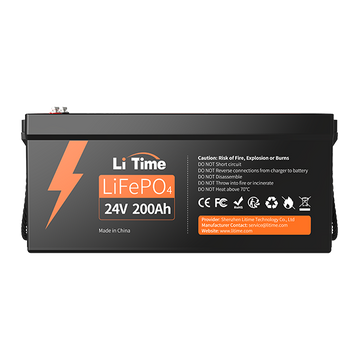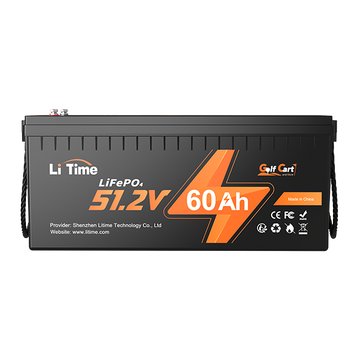Understanding your lithium battery's voltage is more than just reading a number on a meter—it's the key to unlocking its full potential, ensuring its safety, and maximizing its lifespan. Whether you're powering an RV, a marine application, a solar storage system, or any critical device, a precise lithium battery voltage chart is your most essential tool.
This ultimate guide for 2025 will demystify lithium battery voltage, with a special focus on LiFePO4 technology, providing you with clear charts and practical knowledge. From the basic concepts to detailed 12V LiFePO4 voltage charts and beyond, we equip you with everything you need to master your power source.
Understanding Lithium Battery Voltage and Why It Matters
Voltage is the fundamental measure of a lithium battery's electrical potential, serving as the primary indicator of its state of charge and health.
Simply put, it tells you how much "push" is available to power your devices and, crucially, how much energy is left. To accurately interpret this critical data point and use it to optimize performance and longevity, it's essential to first understand the key types of voltage and their specific roles.
Key Voltage Types: Nominal, Charging, and Cut-off
To effectively use a lithium battery voltage chart, you must first understand the key voltage specifications that define its operation. Lithium Iron Phosphate (LiFePO4) batteries, known for their safety and long lifespan, operate within a specific voltage window that is crucial to their performance.
● Nominal Voltage: This is the standard or average voltage, typically around 3.2V for a LiFePO4 cell, where it delivers optimal performance during use.
● Charging Voltage: Also known as the fully charged voltage, this is the maximum safe level, up to 3.65V per cell, used to charge the battery. Exceeding this can cause irreversible damage.
● Cut-off Voltage: This is the minimum safe discharge voltage, typically 2.5V per cell. Discharging below this threshold leads to a harmful deep discharge state, which can permanently damage the battery.
● Storage Voltage: For long-term storage, a specific voltage (typically around 3.25V - 3.3V per cell) is ideal to preserve battery health and minimize capacity loss when not in use.
The Impact of Voltage on LiFePO4 Battery Performance and Lifespan
The renowned long lifespan, safety, and reliability of LiFePO4 batteries are directly tied to proper voltage management. The State of Charge (SOC), indicated by voltage, dictates the battery's capacity and energy storage.
Adhering to the correct voltage parameters is critical:
● Performance & Capacity: A higher voltage indicates greater capacity. Operating between the correct charging and cut-off voltages ensures you access the battery's full rated capacity. Deep discharging permanently reduces future usable capacity.
● Cycle Life: The long cycle life of LiFePO4 (4000+ cycles) is achieved by strictly avoiding the stress of over-charging (exceeding charging voltage) and over-discharging (falling below cut-off voltage).
● Safety: Proper voltage management is the primary safety mechanism, preventing hazardous situations caused by operating outside the safe window.
In short, respecting the voltage limits is the key to unlocking the full value, durability, and safety of your LiFePO4 investment.
LiFePO4 Battery Voltage Chart: A Detailed Breakdown
Now that we understand the key voltage types, let's put that knowledge into practice. All LiFePO4 battery packs are built from a fundamental building block: the 3.2V lithium ion battery cell. The following comprehensive chart shows you the State of Charge (SoC) for this core cell and the most common battery configurations, allowing you to accurately gauge the energy level of any system.
Comprehensive LiFePO4 Battery Voltage Chart (3.2V Cell to 12V, 24V, 48V Pack)
Use this unified chart as your ultimate reference. The voltages for 12V, 24V, and 48V batteries are directly calculated by connecting 4, 8, and 16 cells in series, respectively.
| State of Charge | 3.2V Cell |
12V Battery |
24V Battery |
48V Battery |
|---|---|---|---|---|
| 100% (Fully Charged) | 3.65V | 14.6V | 29.2V | 58.4V |
| ~90% (Resting) | 3.35V | 13.4V | 26.8V | 53.6V |
| ~50% (Nominal) | 3.30V | 13.2V | 26.4V | 52.8V |
| ~20% (Low Charge) | 3.25V | 13.0V | 26.0V | 52.0V |
| 0% (Cut-off) | 2.50V | 10.0V | 20.0V | 40.0V |
How to Read and Apply This LiFePO4 Battery Voltage Chart
● Focus on the "Sweet Spot": For maximum battery life, try to operate your system within the 90% to 20% SoC range. For a 12V LiFePO4 battery, this means the stable voltage range between 13.4V and 13.0V.
● Understand the Relationship: Notice how the cell voltage multiplies. A 12V battery (4 cells) at 100% charge is simply 3.65V x 4 = 14.6V. This logic applies to all voltage levels.
● Your Action Points:
1. Recharge Signal: When your 12V battery voltage drops to ~13.0V (or proportional voltage for other systems), it's time to recharge.
2. Fully Charged: A voltage reading at the top of the range (e.g., 14.6V for 12V) indicates a full battery.
3.2V LiFePO4 Cell Voltage Curve
The fundamental building block of every lifepo4 lithium battery pack, the 3.2V cell demonstrates the characteristic flat voltage plateau that makes this technology so reliable.

12V LiFePO4 Battery Voltage Curve
The stable voltage curve of 12V LiFePO4 batteries makes them particularly well-suited for RV LiFePO4 batteries applications, providing consistent power delivery essential for mobile living and solar setups.

When fully charged, a 12V LiFePO4 battery reaches 14.6V. As it discharges, the voltage gradually decreases, reaching 10V when fully depleted. Learning to monitor your 12V lithium battery voltage helps avoid deep discharge (below 10V) and extends battery life.
24V LiFePO4 Battery Voltage Curve
For industrial applications requiring higher power, the 24V lifepo4 lithium battery system maintains the same reliable flat curve that ensures consistent equipment performance.
A fully charged 24V system reaches 29.2V, with a discharge cutoff at 20V.

48V LiFePO4 Battery Voltage Curve
Large-scale energy storage and electric vehicle systems benefit from the 48V lifepo4 lithium battery configuration, which provides efficient power with minimal voltage fluctuation.

These systems charge to 58.4V and should not be discharged below 40V. Understanding lithium battery voltage characteristics in 48V configurations is essential for preventing system-wide damage and ensuring operational safety.
Understanding LiFePO4 Voltage Curves
The unique voltage curve of a lifepo4 lithium battery sets it apart from other battery chemistries, offering exceptional performance stability.
● Flat Voltage Platform: A lifepo4 lithium battery maintains minimal voltage change between 20%-90% State of Charge
● Stable Power Delivery: Consistent performance makes lifepo4 lithium battery ideal for sensitive electronics
● Clear End-Points: Sharp voltage changes provide reliable indicators for any lifepo4 lithium battery management system
LiFePO4 Battery Charging and Discharging Explained

Properly charging and discharging your lifepo4 lithium battery is the practical application of understanding its voltage. Adhering to the correct lithium battery voltage parameters is the single most effective way to maximize its renowned lifespan and ensure safety.
Charging LiFePO4 Batteries: Best Practices and Voltage Parameters
To achieve both a full charge and long battery life, it's essential to understand the correct charging method and its associated voltage parameters.
The CC/CV Charging Method in Practice:
The optimal way for charging LiFePO4 batteries is the Constant Current-Constant Voltage (CC/CV) protocol.

For a 12V LiFePO4 battery, this process is straightforward:
● Constant Current (CC) Stage: The charger applies a fixed current, pushing the 12V lithium battery voltage from a low state rapidly up to its target charging voltage of approximately 14.6V.
● Constant Voltage (CV) Stage: Once the voltage hits 14.6V, the charger holds this voltage steady. The incoming current then naturally tapers down as the battery becomes full. This phase safely tops off the last ~10-15% of capacity without the risk of overcharging.
Putting this into practice is straightforward. By following the checklist below, you can ensure your lifepo4 lithium battery is charged safely and efficiently.
Best Practices Checklist:
● Optimal Charging Voltage: Adhere to the 14.2V to 14.6V range for a 12V lithium battery.
● Use a Compatible Charger: Always use a charger that follows the CC/CV profile for LiFePO4 chemistry.
● Temperature Awareness: Do not charge below 32°F (0°C).
● Longevity Tip: For daily use, charging to ≈90% capacity (around 13.4V) is recommended.
Discharging LiFePO4 Batteries: Safe Limits and Voltage Cut-offs
Safe discharging is all about preventing deep discharge by understanding and respecting the voltage cut-offs.
● Discharge Cut-off Voltage: The minimum safe lithium battery voltage for a 12V system is 10.0V. Discharging below this level can cause permanent damage.
● Utilize Depth of Discharge (DoD): Limiting discharge to 80% Depth of Discharge (i.e., only using 80% of the capacity) will significantly increase the number of cycles your lifepo4 lithium battery can deliver.
● Rely on Your BMS: Ensure your battery's Built-in Management System (BMS) is functional, as it automatically disconnects the load at the low-voltage cut-off.
● Storage Voltage: If storing your lifepo4 lithium battery for an extended period, charge or discharge it to about 50% capacity for optimal long-term health.
How to Measure Lithium Battery Voltage
Regularly checking your lithium battery voltage is a fundamental maintenance task. It allows you to accurately gauge the State of Charge, identify potential issues early, and ensure your system is operating within safe voltage parameters. Below are the three most common and effective methods.
Method 1: Using a Multimeter

A multimeter is the most direct and versatile tool for a spot-check of your battery's voltage.
Step-by-Step Guide:
1. Safety First: Ensure all loads and chargers are disconnected. Wear safety glasses if available.
2. Set Your Multimeter: Turn the dial to the DC Voltage (V-) setting, choosing a range higher than your battery's expected voltage (e.g., 20V for a 12V system).
3. Connect the Probes: Touch the red (positive) probe to the battery's positive terminal and the black (negative) probe to the negative terminal.
4. Read the Voltage: The display will show your lithium battery voltage. Compare this reading to your voltage chart to determine the State of Charge.
Best For: Quick, on-the-spot verification of the immediate lithium battery voltage.
Method 2: Using a Battery Monitor

A dedicated battery monitor provides the most accurate and comprehensive data for ongoing system management.
Best For: Users who require continuous, precise monitoring of lithium battery voltage and overall system health for advanced power management.
Method 3: Using a Bluetooth Smart App

Many modern lifepo4 lithium battery packs come with a built-in Bluetooth module, allowing for wireless monitoring via a smartphone app.
Best For: Convenient, wireless access to real-time lithium battery voltage and advanced diagnostics directly from a smartphone.

Conclusion: Mastering Lithium Battery Voltage for Optimal Use
As we have seen throughout this guide, the lithium battery voltage chart is your most critical tool for unlocking the full performance, safety, and longevity of your power system. It transforms abstract lithium battery voltage readings into a clear and actionable roadmap for battery management.
For detailed specifications and the latest technical data on LiFePO4 lithium batteries, we recommend consulting reputable manufacturers like LiTime and industry experts. This ensures you have the most accurate information for successfully integrating these advanced energy storage solutions into your specific projects.
LiFePO4 Battery Voltage FAQ: Common Questions Answered
What is the nominal voltage and safe operating range of a single LiFePO4 cell?
A single LiFePO4 cell has a nominal voltage of 3.2V. The safe operating window typically ranges from 2.5V (fully discharged) to 3.65V (fully charged). It's crucial to prevent the cell voltage from dropping below 2.5V to avoid permanent damage and ensure long battery life.
At what voltage is a 12V LiFePO4 battery considered fully charged?
A 12V LiFePO4 battery reaches full charge at approximately 14.2V to 14.6V, depending on the specific battery chemistry and charging algorithm. The exact voltage may vary slightly between different manufacturers and battery models.
What is the optimal operating voltage range for a 12V LiFePO4 battery?
For daily use, a 12V LiFePO4 battery typically operates best between 13.0V and 13.8V. This range provides optimal performance while maintaining battery health and maximizing cycle life.
What voltage indicates a 100% state of charge for LiFePO4 batteries?
The 100% state of charge voltage varies by battery configuration:
● Single cell: ~3.65V
● 12V battery: ~14.6V
● 24V battery: ~29.2V
● 48V battery: ~58.4V
What constitutes a healthy voltage range for LiFePO4 batteries during normal operation?
A healthy LiFePO4 battery should maintain:
● Nominal voltage: 3.2V per cell
● Operating range: 3.0V to 3.45V per cell during discharge
● Storage voltage: 3.2V to 3.3V per cell for long-term preservation
The flat voltage curve of LiFePO4 chemistry means voltage remains relatively stable through most of the discharge cycle
